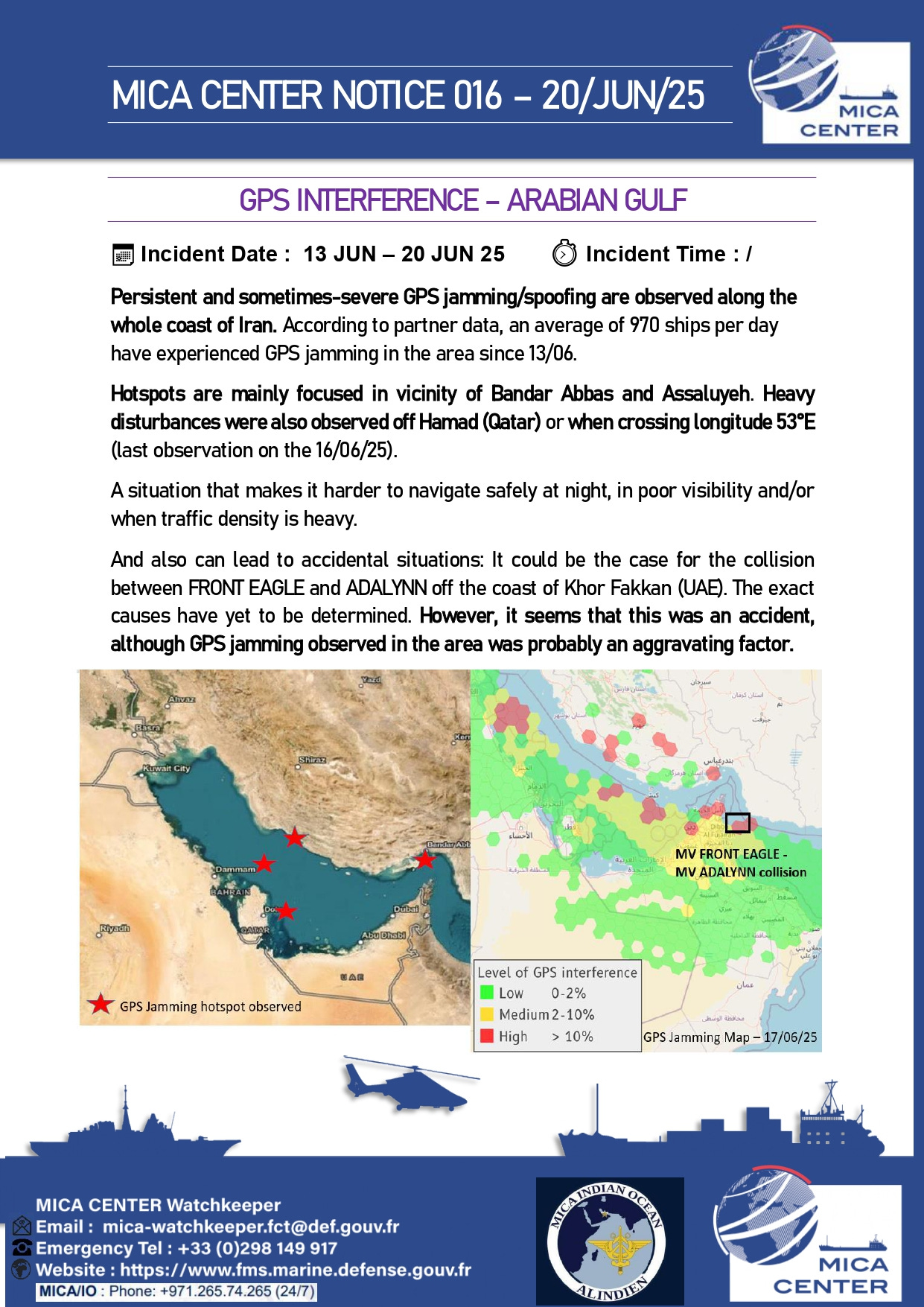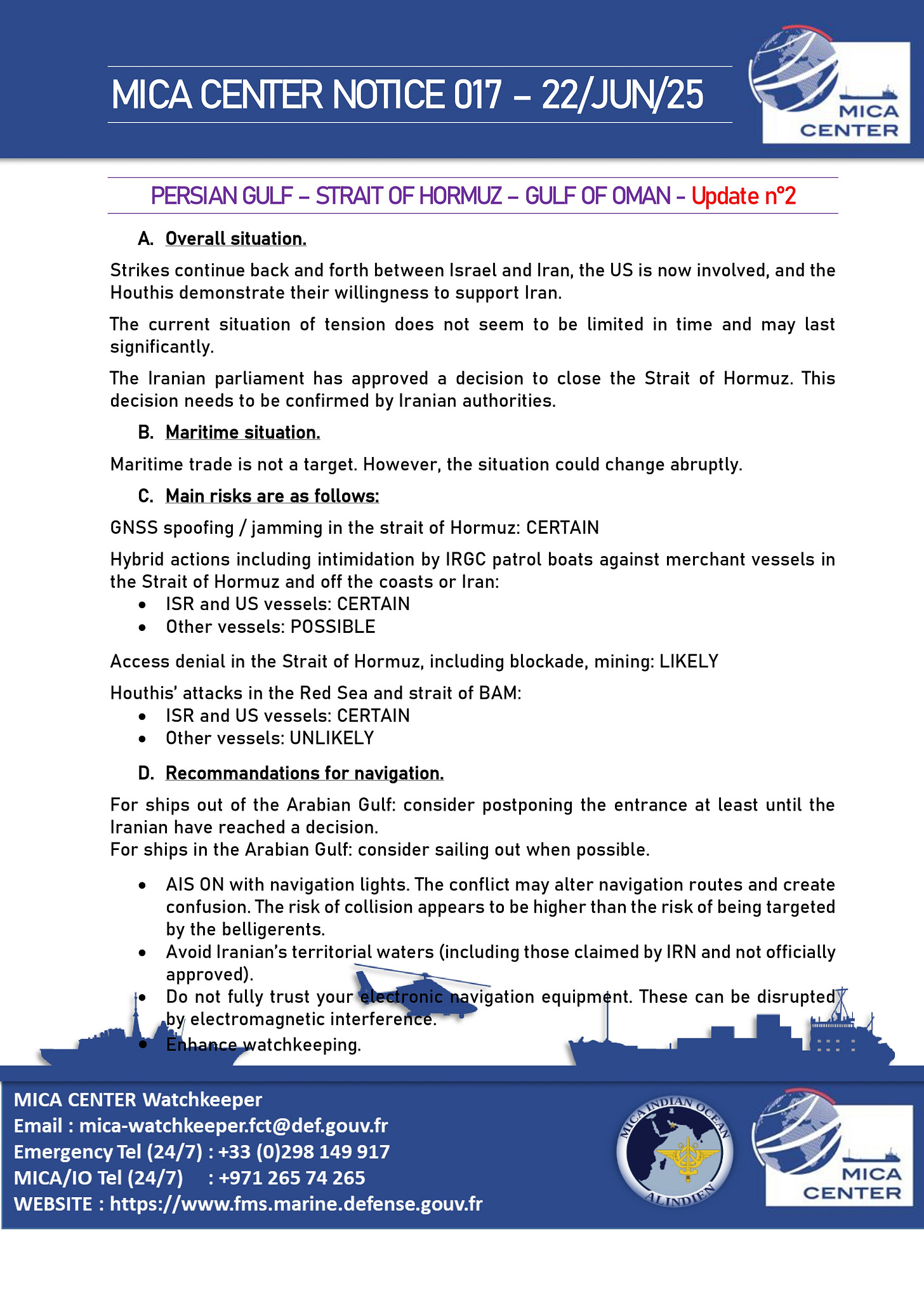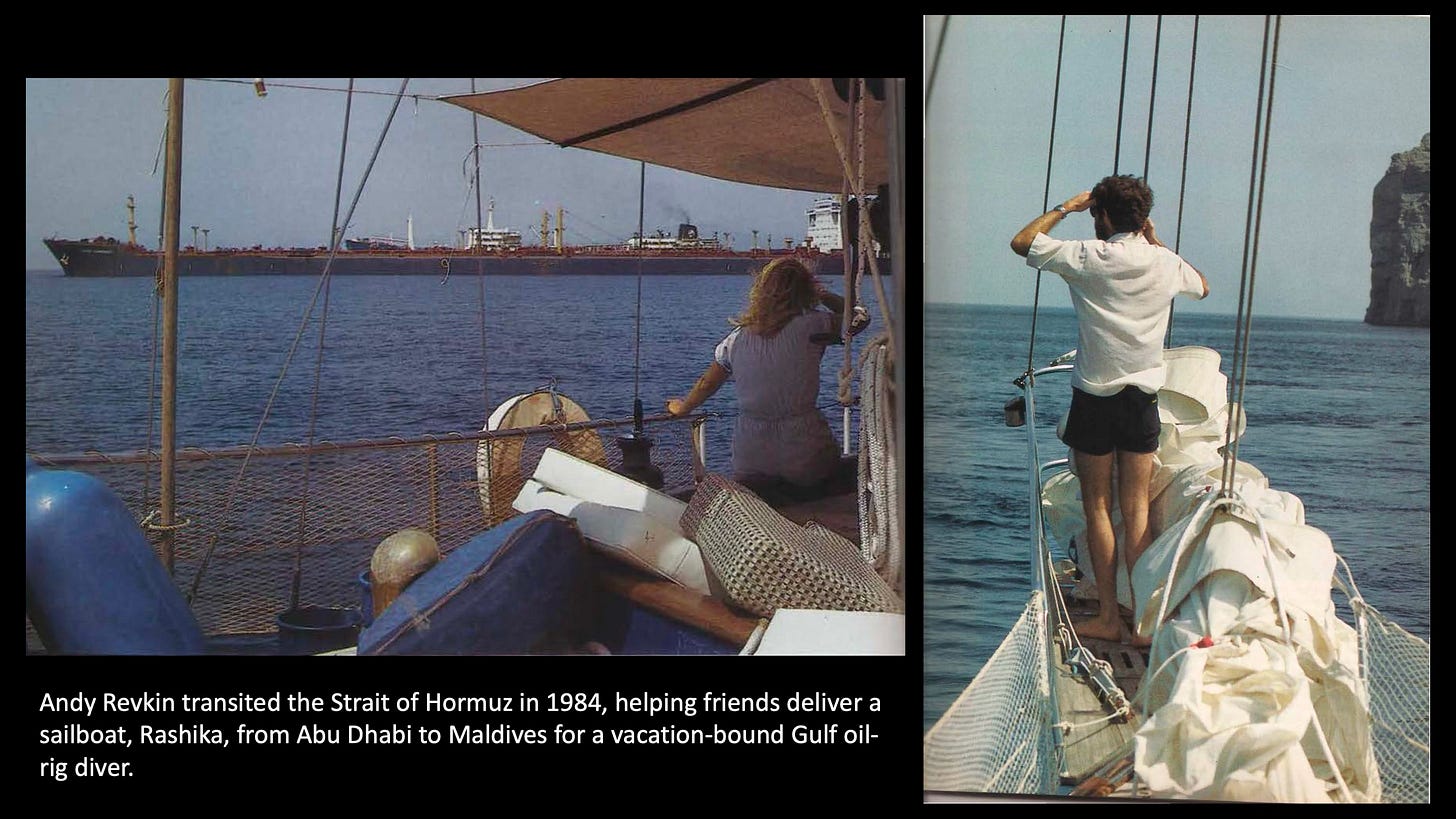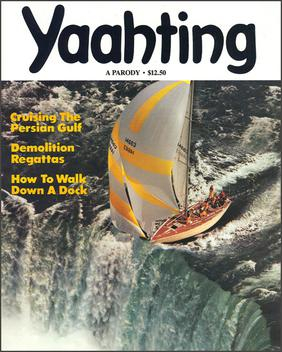Persian Gulf Ship Traffic is Threatened by More than Iran's Mines and Missiles
Jamming of GPS is a growing danger there and in other conflict zones.
Toplines:
Iran’s anti-ship mines and missiles are just one threat to oil and gas shipping in the Persian Gulf and Strait of Hormuz. Nearly a thousand ships a day have been experiencing dangerous GPS jamming along Iran’s coast there since June 13, even before the Trump bombing.
These disruptions of navigation can have catastrophic consequences, as you’ll read below. You can get a sense of the intensity of ship traffic in these two animations from Kpler, a company monitoring global trade. It was the mention of GNSS (Global Navigation Satellite System) interference that led me to post.
This is off my usual beat, but I did cover Middle East conflict and terrorism threats for The New York Times for awhile after the 9/11 attacks. And, way back in 1984, I actually sailed from Abu Dhabi to the Maldives through the Strait of Hormuz - at the tail end of the Iran-Iraq War. I was helping an old friend from a previous globe-spanning sailing trip deliver a ketch, Rashika, to that coral-spangled archipelago for a British oil-rig diver preparing for a vacation. (You can see a couple of photos from that sail at the end of this post, and click a link to a quirky humorous essay I wrote about that experience.)
Back then, there was no global positioning system (GPS) giving ship crews instant and precise coordinates for themselves and others. Here was my friend, the skipper Lon Bubeck, navigting old-style on that trip.
Now GPS and other navigational tools are being actively jammed in and around the Gulf, according to organizations and companies monitoring maritime shipping.
The shipping news publication gCaptain posted this update on June 20:
A significant increase in GPS jamming and spoofing incidents along the Iranian coast is raising serious concerns about maritime safety in one of the world’s most critical shipping channels. According to the Maritime Information Cooperation & Awareness Center (MICA), approximately 970 ships per day have experienced GPS interference in the region since June 13.
The story cited this alert posted on X that day from the Maritime Information Cooperation & Awareness Center (MICA) - a French operation tracking security threats to global shipping: “Persistent and sometimes-severe GPS jamming / spoofing are observed along the whole coast of Iran. According to partner data, an average of 970 ships per day have experienced GPS jamming in the area since 13/06.”
Here’s the X post:
Such jamming is thought by that organization to have contributed to a fiery collision between two large oil tankers just outside the Strait on June 16. This Vesselfinder post has the details on that collision.
Yesterday, in the wake of President Trump’s bombing and missile attacks on Iran’s nuclear facilities, MICA posted this update:
The current situation of tension does not seem to be limited in time and may last significantly. The Iranian parliament has approved a decision to close the Strait of Hormuz. This decision needs to be confirmed by Iranian authorities….
For ships out of the Arabian Gulf: consider postponing the entrance at least until the Iranian [sic] have reached a decision. For ships in the Arabian Gulf: consider sailing out when possible.
As you watch news media focusing on the Gulf as Trump and Iran’s leaders spar, remember the threats go well beyond weaponry.
There’s a wider threat in such disruptions, as several United Nations agencies warned back in March.
Scenes from the pre-digital Persian Gulf
Here are a couple of scenes from my Strait of Hormuz transit decades ago (during an earlier war):
And here’s your exclusive pdf download of the spoofy story I wrote, called “Cruising the Persian Gulf,” published in a one-time satirical takeoff on Yachting magazine called Yaahting (edited by the now-famed author and historian Nat Philbrick):











